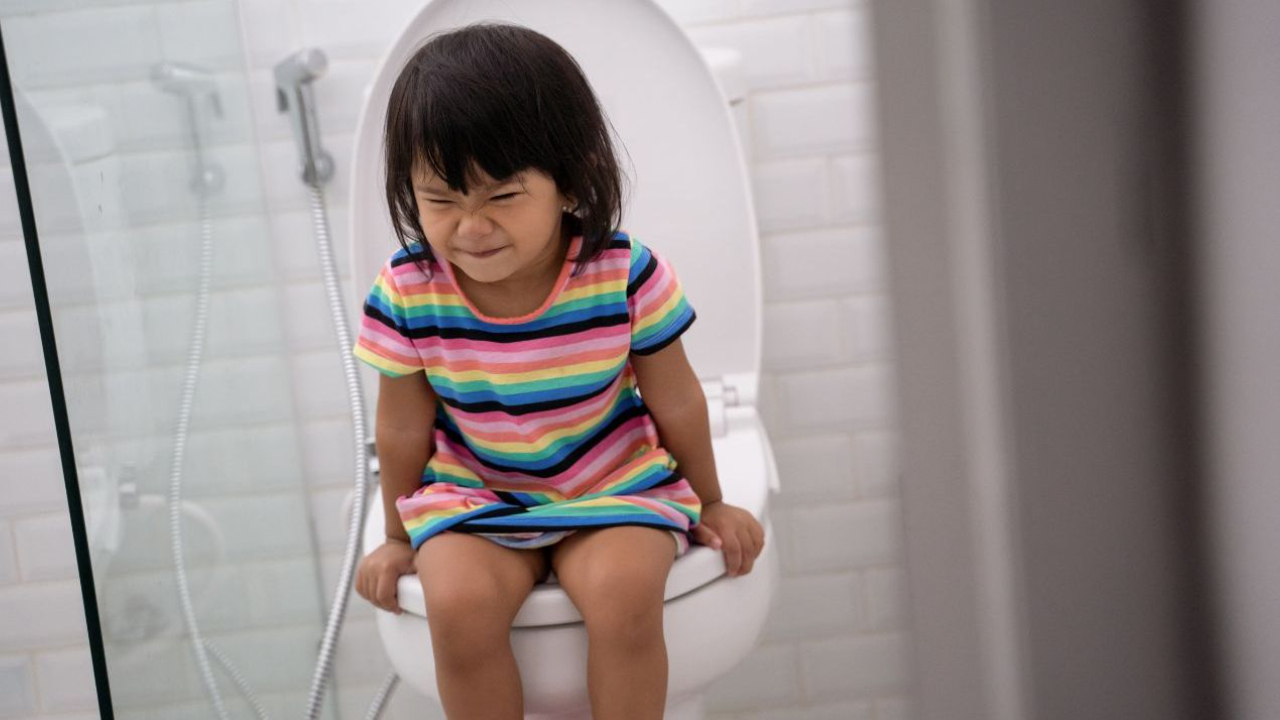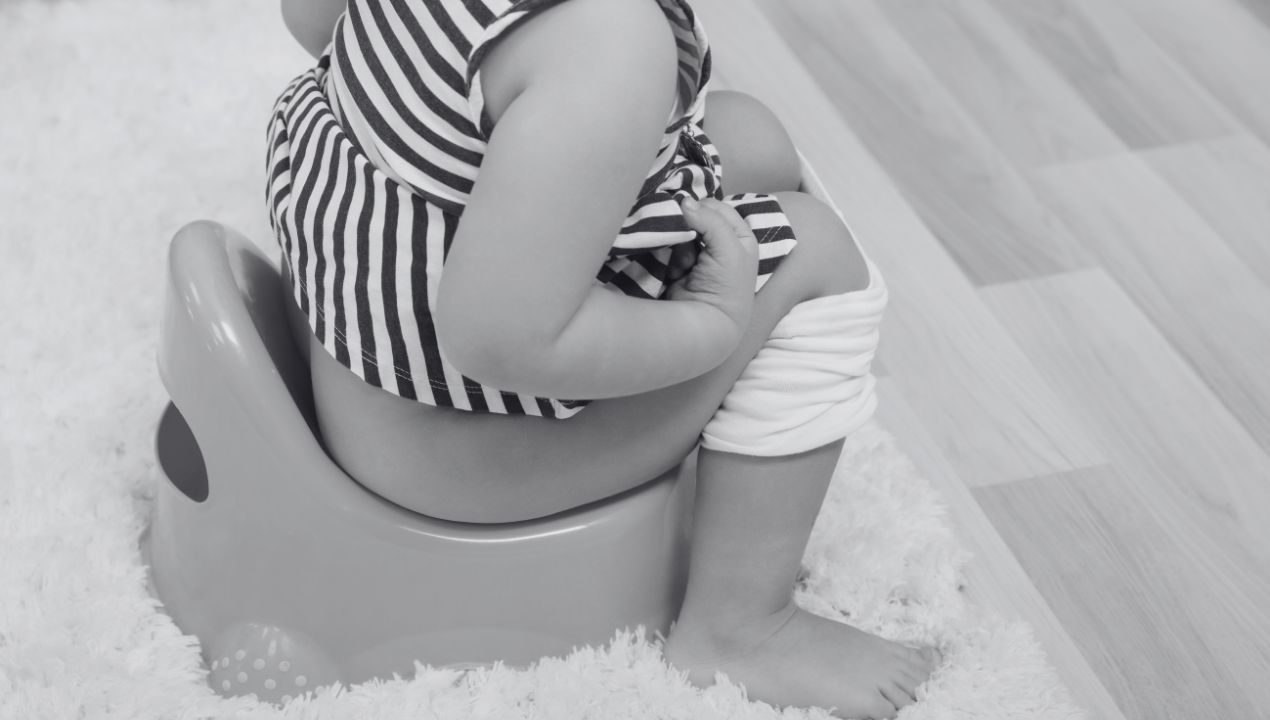
6 natural ways to conquering constipation and pooping resistance in potty training
Jul 12, 2023Constipation - a common source of painful bowel movements, belly aches, cramping, bedwetting and soiling, affects millions of kids each year. In fact, according to a 2018 study in The Journal of Pediatrics, 18% of toddlers and 14% of children and teens from 4 - 18 years old suffer from constipation.
In toddlers and kids around potty training age, children often become constipated by withholding their stool to avoid or delay a bowel movement... and this behavior often stems from fears and anxieties around going, leading to potty training hurdles like pooping resistance… a source of pain and stress for many kids and their parents.
The good news is, there are some natural approaches out there that can help alleviate constipation and promote regular and comfortable bowel movements... which will in turn, see less resistance from your child to poop on the potty. In this blogpost, we’ll dive into my top 6 natural ways that can help conquer constipation and ultimately see less pooping resistance during potty training.
1. ADJUST SEATING AND POSTURE
Did you know that seating and posture on the toilet or potty has a significant impact on how easy it is for them to go? It’s true!
While posture alone won't likely resolve your child's constipation, it will make it substantially easier, faster and more comfortable (you should try it too!).
The prime position for pooping is a squat-like position.

It helps to straighten the puborectalis muscle (an important muscle that makes up part of the pelvic floor), which makes it easier for poop to pass through and relax the pelvic floor and core muscles - reducing straining and pooping time.
To achieve this positioning, this is what you’re looking out for when your kid potty sits:
- Feet are secure on a surface. Your child's feet need to be secure on a flat surface like a step-stool or the floor to ensure stability and help prevent the clenching of inner thighs (which kids tend to do to avoid falling in). By clenching, the muscles in the pelvis tighten and tense up, making it difficult to relax and release
- Knees need to be slightly above the hips - in line with your child’s belly button, to simulate a squat position.
- Prompt your child to lean slightly forward (not too far forward) with elbows on knees, shoulders rounded and straight spine.
- Legs to be apart - to help the muscles relax
The more relaxed and supported your child feels while sitting, the easier it will be for your child to release!
Starting with a potty
Starting with a potty can also play it's part in positioning and conquering constipation.
 A potty is less intimidating than a toilet.
A potty is less intimidating than a toilet.
It's size appropriate for a toddler which means they can go independently without your assistance.
It also promotes the correct squat-like position that makes it easier for your child to go.
If your child has a preference for a toilet, by all means run with it. Just be sure the toilet is set-up to be accessible and support the same seating posture. You can achieve this with a step stool and toilet seat insert or a toilet seat with a ladder that goes over the toilet.
2. BOWEL RETRAINING
Bowel retaining means establishing healthy habits and routines around pooping on the potty or toilet.
The first thing you can do is try to encourage your child to have regular potty sits after meals. There is a natural reflex mechanism which helps to stimulate the urge to poop around 20-30 minutes after a meal. A potty sit in the morning after breakfast can help to avoid withholding during the day at school. Even if your child poops after breakfast, aim for a toilet sit after dinner.
If your child poops around a regular time each day, prompt your child around this time. You also want to aim for 5-10 minutes of sitting time and make this part of their daily routine.
If you’re met with resistance, try bringing the fun to the potty by creating a basket of toys that are exclusive for potty sits! Toys like fidget toys, interactive books and water sensory toys are a super effective way to provide entertainment and distraction, as well as reduce anxiety and resistance!
3. REDUCE COWS MILK
Cows milk consumption has been associated with thicker stools, making them more difficult to pass in some kids.
In fact, some kids can become constipated around the age of 1 when they move from breastmilk or formula to cow's milk.
The cow's milk protein, casein, can be difficult for some children to digest… and in some cases, digesting this protein can lead to constipation. The undigested proteins can also ferment in the gut too, causing gas, bloating and ultimately contribute to irregular bowel movements.
Other kids can be lactose intolerant, meaning the body has difficulties digesting lactose, a natural sugar found in milk. When lactose is not properly digested, it can also cause bloating, gas and discomfort, potentially leading to constipation.
So if your child is experiencing harder, less regular stools, consider monitoring your child’s milk intake to the daily recommended amount for your child’s age, or consider eliminating it altogether and replacing it with alternatives like oat or almond milk-based products.
4. INCREASE HYDRATION
What is equally as important is water! Drinking water and other fluids keep stools soft and easy to pass, reducing the risk of constipation.
As a general rule, a child should drink close to half an ounce of water for each pound they weigh. For example, if your child weighs 125 lbs, they should be drinking close to 8 x 8 ounces of water (64 ounces a day).
5. SUPPLEMENTAL SUPPORT
Adding certain nutrients to your child’s diet can act as natural laxatives making it easier for stools to pass through. However for kids that have difficulties meeting their dietary requirements, supplements are an easy way to meet an adequate intake of these nutrients that help support constipation.
Magnesium Citrate
Magnesium citrate draws water into the intestines, softening the stool and promoting its movement. It’s also a natural muscle relaxant, meaning it helps to relax the muscles in the intestinal walls which help support the contractions that move stools through the digestive tract. Magnesium citrate is most commonly found in powder form for kids.
Vitamin C
The water-absorbing properties of Vitamin C also helps to soften stools and makes it easier to pass… and the softer the stools, the less likely to cause discomfort or constipation! Vitamin C acts as a natural stimulant for the digestive system, helping to move the stool through the digestive tract increasing the frequency and efficiency of bowel movements. It also works alongside dietary fiber to keep it hydrated to pass through the digestive system.
Vitamin C is a nutrient that is found naturally in citrus fruits, strawberries, kiwi, papaya, pineapple and leafy greens or it can be supplemented if your kiddo is not meeting the daily requirement for their size and age!
Castor Oil
Caster oil is another natural remedy that has been used for centuries to relieve constipation. Just like magnesium and vitamin c, castor oil helps to stimulate intestinal contractions that help the movement of stools through the digestive tract. It also helps to lubricate the bowel, softening stools and intestinal walls to make stools softer and easier to pass.
Castor oil can be added to fruit juices, blended with smoothies and combined with apple sauce to help make it more palatable for kids.
‘Good’ bacteria
Adding good bacteria like probiotics and prebiotics to your child’s diet can directly benefit your child’s digestive health through its impact on the gut.
Certain probiotic strains will produce neurotransmitters that stimulate muscle contractions and help food move more easily though your body… making stools softer, more regular and easier to pass!
The probiotic blend of Seed’s PDS-08®™ Pediatric Daily Synbiotic includes 9 clinically studied probiotic strains that have been proven to support easy, frequent poops, more frequent bowel movements promoting healthy regularity… without causing side effects like pain, bloating, gas and diarrhea.
The best thing about Seed’s PDS-08®™ is that unlike other probiotics on the market, it has clinical data to support their claims, so you can actually trust that their probiotics work… and deliver on their promise.
Fiber and prebiotics
Fiber is the most important nutrient for healthy bowel movements.. and also one of the hardest nutrients to incorporate into a child’s diet!
Fiber can be found naturally in foods like fruits, vegetables, nuts, legumes and helps to bulk up stools making them larger and the consistency of poops smoother and easier to pass through the digestive system. An inadequate amount of fiber in the diet can contribute to hard and painful bowel movements that can be the source of pooping resistance in kids, particularly around potty training age.
Most moms will agree that getting high fiber foods like broccoli, beans and leafy greens into their kids' diets is virtually impossible! It also doesn’t help that children's menus in restaurants regularly serve ‘kid friendly foods’ like chicken nuggets, mac and cheese, quesadillas, fries and bagels - all of which are low in fiber and can actually contribute to constipation.
The good news is, supplementing your child’s diet with a prebiotic / probiotic blend like Seed’s PDS-08®™ can also help to bridge your child’s fiber gap - with each serving contains 5 grams of fiber (equivalent to 38 cherries and 1.1 cups of broccoli!).
Seed’s PDS-08®™ is also a dual-phase prebiotic meaning it’s comprised of both short-chain (FOS) and long-chain (inulin) fibers to meet the needs of your child’s GI tract and colon… helping to bulk up, soften stools and lead to more regular bowel movements.
6. LIFESTYLE CHANGES

Did you know that movement can have a meaningful impact on managing your child’s constipation? Physical activity helps to stimulate bowel motility and keep things moving!
Try to encourage your kiddo to stay active, run around, jump and play. Here are some fun ideas to try:
- Create an obstacle courses inside the home using things like painters tape and paper cut outs
- Have “dance parties” with your child
- Hit your local playgrounds
- Move indoor toys outdoors to encourage more active play outside
Constipation can be challenging to overcome, particularly around kids of potty training age who are at the beginning stages of learning about their bowel and bladder control.
However, natural approaches like dietary and lifestyle changes, supplemental support, bowel retraining and adjustments to seating posture can have a meaningful impact on the regularity and comfort of your child’s bowel movements and may help to see less anxiety and resistance when it comes to pooping.
*Disclaimer: No content on this site should ever be used as a substitute for direct medical advice or treatment from your doctor or other qualified clinician.
Ready to ditch diapers for good this summer?
Fast, easy, stress-free potty training IS possible with our best-selling course Cut The Crap. Love it, or your money back.


